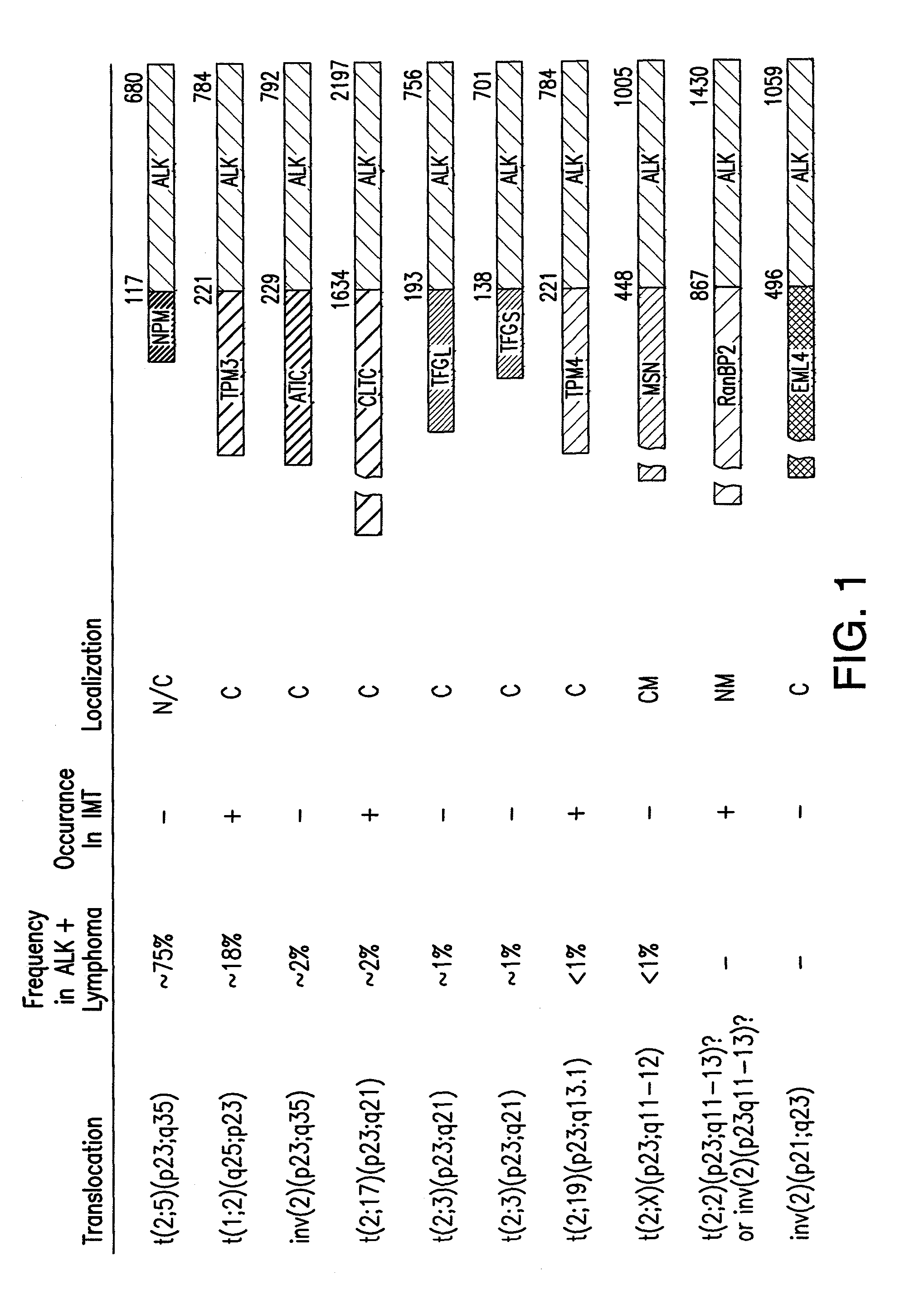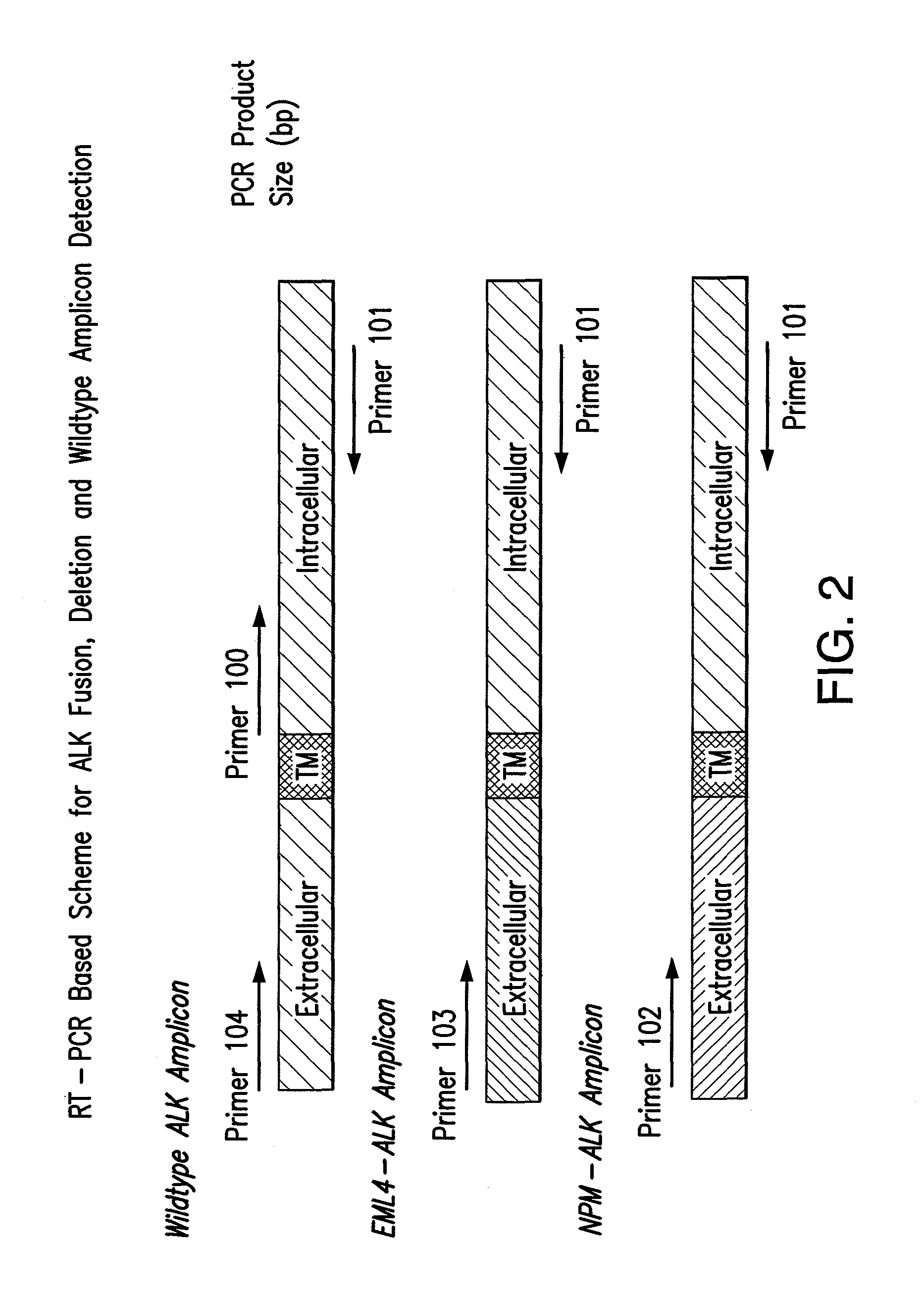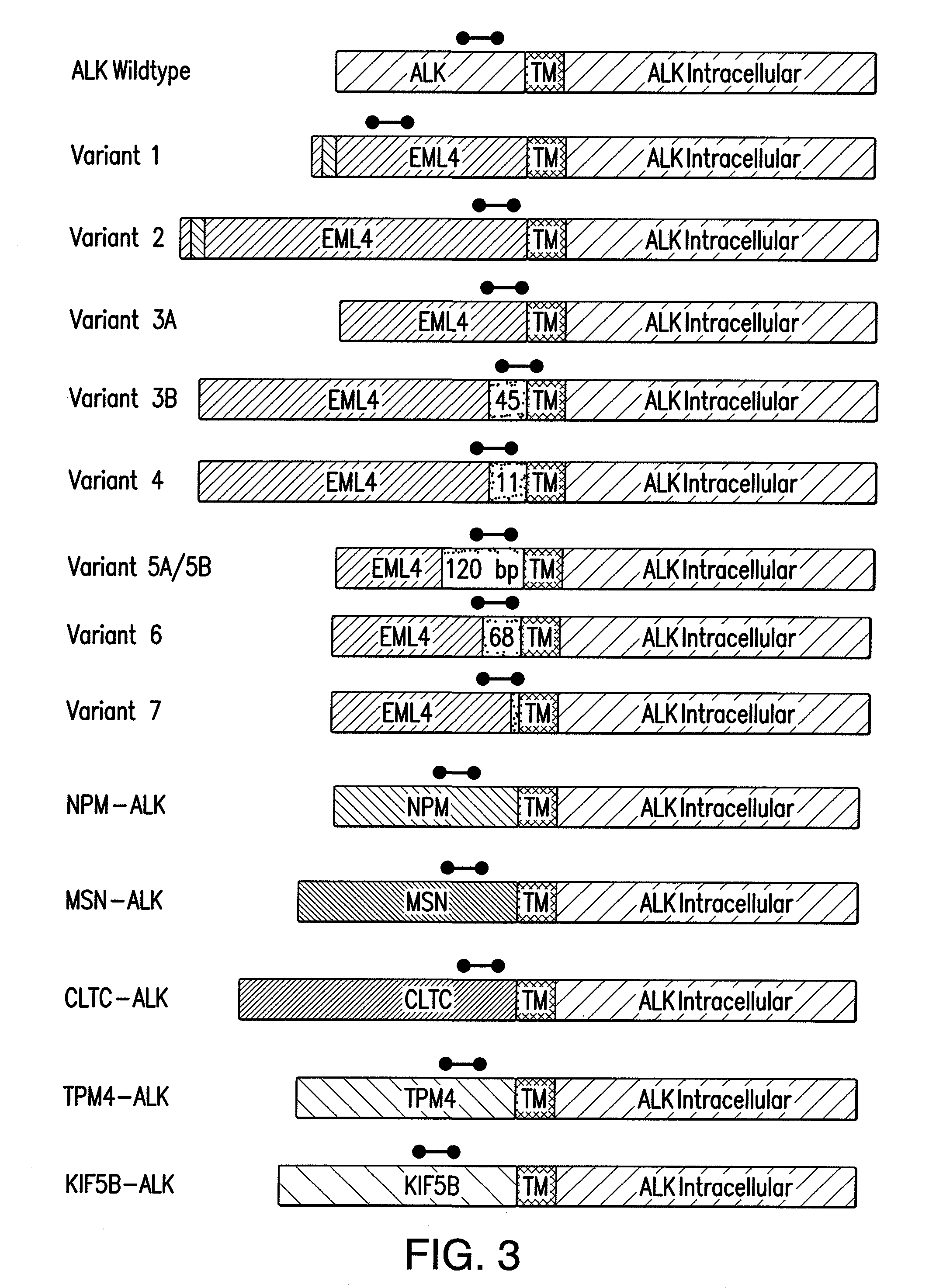Methods and compositions relating to fusions of alk for diagnosing and treating cancer
- Summary
- Abstract
- Description
- Claims
- Application Information
AI Technical Summary
Benefits of technology
Problems solved by technology
Method used
Image
Examples
example 1
A. Example 1
ALK Fusion Genes in Hematological Malignancies and Solid Tumors (Anaplastic Large-Cell Lymphoma, ALK+ Diffuse Large B-Cell Lymphoma, ALK+ Systemic Histiocytosis, IMT Sarcoma, Non-Small Cell Lung Carcinoma, Esophageal Squamous Cell Carcinoma, Breast Cancer, Colorectal Carcinoma)
[0183]Although the point mutations of ALK occur in neuroblastoma, so-called “ALK fusions” actually represent the most common mutation of this tyrosine kinase (FIG. 1). Subsets of each of the hematological (blood system-derived) and solid tumors listed above in the heading are caused by ALK fusions. As one example, the novel EML4-ALK fusion protein is found in nearly 7% of Japanese non-small cell lung carcinoma patients. To perform RT-PCR detection of ALK fusion sequences, tissue samples from a subject with a cancer are obtained. mRNA is extracted from the tissue samples. The RT-PCR reaction utilizes at least one forward primer and a reverse primer. FIG. 2 shows examples of various primer pairings. ...
example 2
B. Example 2
Template Exchange Extension Reaction (TEER)
[0184]Template Exchange Extension Reaction (TEER) refers to a class of methods that can compare an unknown or unsequenced nucleic acid template to a sequenced template to determine if they are identical. It is based on the fact that sequencing products are unique to the template from which they are generated. The disclosed methods and compositions involve particular forms of TEER.
[0185]Originally the template exchange extension reaction (TEER) was developed to detect unknown germline and somatic mutations present in a homozygous or heterozygous state. This was demonstrated by polyacrylamide gel electrophoresis followed by chemiluminescent detection. The process was converted to a microtiter based detection format. In a microtiter plate format, it has much higher throughput and can be used to quickly screen DNA for mutations prior to DNA sequencing. As a sequence scanning method, it is useful in screening large sample populations...
example 3
C. Example 3
Detecting Insertions and Deletions
[0187]TEER can readily detect insertion and deletions. These mutations create a mismatch at the point of the insertion / deletion or just 3′ of the mutation (on the wildtype extension strand) where the sequence frame is shifted. Detection of these mutations can be hindered in areas where long stretches of the same nucleotide or repeat sequences are present. For example, when a stretch is sufficiently long a hairpin loop can begin to form such that the insertion or deletion is squeezed out and may not be detected. Insertions or deletions near the middle of these stretches are more problematic to detect than those at the ends.
PUM
| Property | Measurement | Unit |
|---|---|---|
| Time | aaaaa | aaaaa |
Abstract
Description
Claims
Application Information
 Login to View More
Login to View More - R&D
- Intellectual Property
- Life Sciences
- Materials
- Tech Scout
- Unparalleled Data Quality
- Higher Quality Content
- 60% Fewer Hallucinations
Browse by: Latest US Patents, China's latest patents, Technical Efficacy Thesaurus, Application Domain, Technology Topic, Popular Technical Reports.
© 2025 PatSnap. All rights reserved.Legal|Privacy policy|Modern Slavery Act Transparency Statement|Sitemap|About US| Contact US: help@patsnap.com



